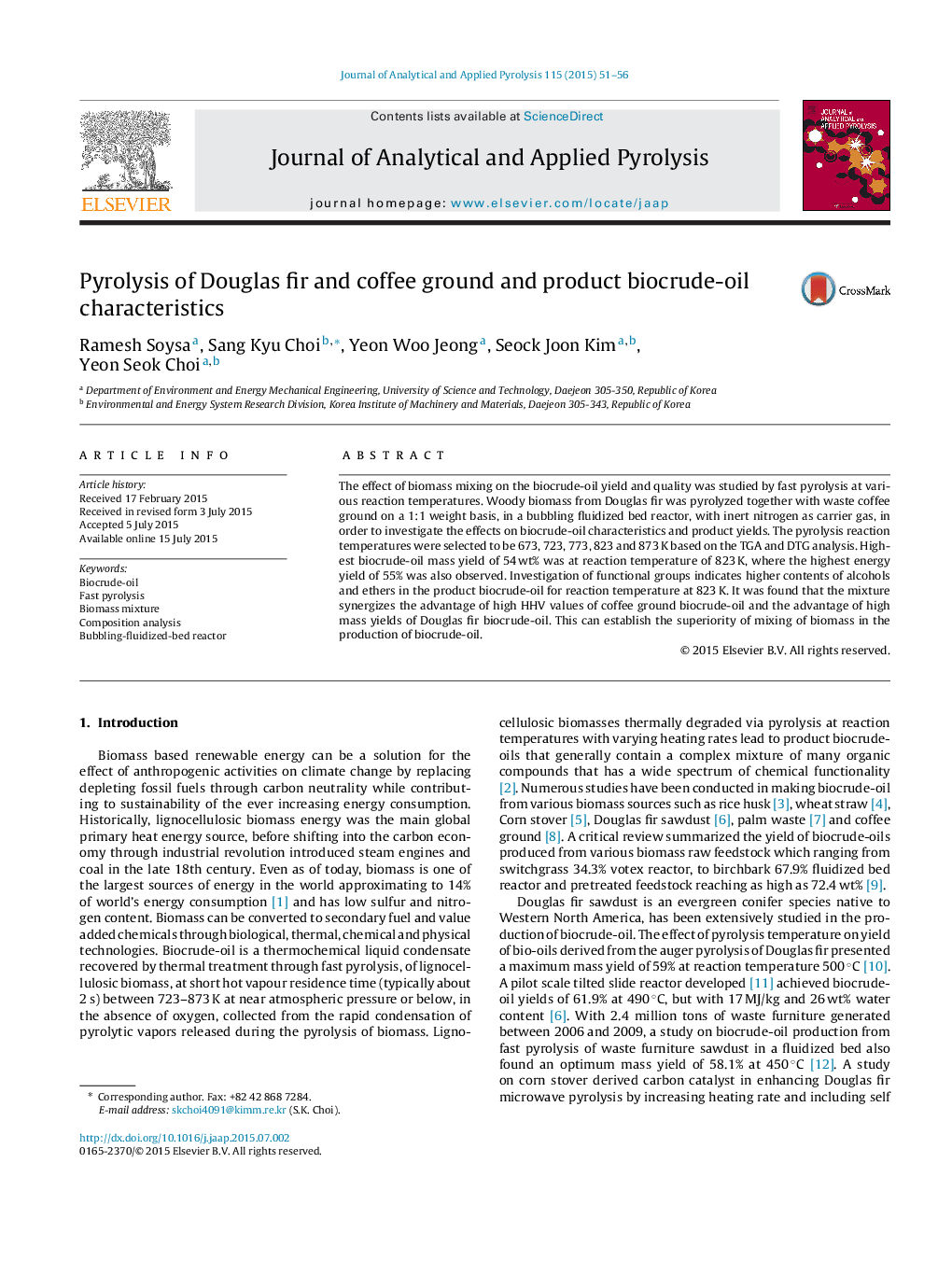| Article ID | Journal | Published Year | Pages | File Type |
|---|---|---|---|---|
| 1197077 | Journal of Analytical and Applied Pyrolysis | 2015 | 6 Pages |
•Fast pyrolysis of Douglas fir and coffee ground is performed to produce biocrude-oil.•Biocrude-oil yields and characteristics are compared at various reaction temperatures.•Functional groups are studied by FTIR analysis.•This study introduces a improved quality coffee-fir biocrude-oil.•First study to compare mixture to that of individual pyrolysis studies.
The effect of biomass mixing on the biocrude-oil yield and quality was studied by fast pyrolysis at various reaction temperatures. Woody biomass from Douglas fir was pyrolyzed together with waste coffee ground on a 1:1 weight basis, in a bubbling fluidized bed reactor, with inert nitrogen as carrier gas, in order to investigate the effects on biocrude-oil characteristics and product yields. The pyrolysis reaction temperatures were selected to be 673, 723, 773, 823 and 873 K based on the TGA and DTG analysis. Highest biocrude-oil mass yield of 54 wt% was at reaction temperature of 823 K, where the highest energy yield of 55% was also observed. Investigation of functional groups indicates higher contents of alcohols and ethers in the product biocrude-oil for reaction temperature at 823 K. It was found that the mixture synergizes the advantage of high HHV values of coffee ground biocrude-oil and the advantage of high mass yields of Douglas fir biocrude-oil. This can establish the superiority of mixing of biomass in the production of biocrude-oil.
